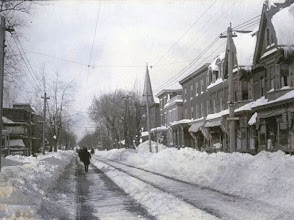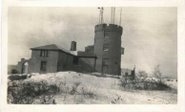Winter '20 / '21 - Forecaster Statistics
 |
| Lincoln Memorial Reflecting Pool and Washington Monument (c.1930) |
For each contest-worthy snow storm ... the forecasts are verified against the observations of storm-total snowfall.
Statistics are calculated to determine how well each forecast captured the magnitude and distribution of the storm's snowfall.
Individual forecaster statistics for the first four snowstorms here.
---
Statistics include:
The average normalized ‘SUMSQ error’ is the Contest/s primary measure of forecaster performance.
This metric measures how well the forecaster/s expected snowfall 'distribution and magnitude' for _all_ forecast stations captured the 'distribution and magnitude' of _all_ observed snowfall amounts.
A forecaster with a lower average SUMSQ Z Score has made more skillful forecasts than a forecaster with higher average SUMSQ Z Score.
The 'Storm Total Precipitation error’ (STP) statistic is the absolute arithmetic difference between a forecaster/s sum-total snowfall for all stations and the observed sum-total snowfall. This metric … by itself …is not a meaningful measure of skill …but can provide additional insight of forecaster bias.
---
The 'Total Absolute error' (TAE) statistic is the average of your forecast errors regardless of whether you over-forecast or under-forecast. This metric measures the magnitude of a forecast’s errors.
----
The 'Average Absolute Error' (AAE) is the forecaster/s ‘Total Absolute Error’ divided by the number of stations where snow was forecast or observed.
---
The ‘RSQ error’ (R-Squared - coefficient of determination) statistic is a measure of the how well the forecast captured the variability of the observed snowfall.
Combined with the SUMSQ error statistic … RSQ provides added information about how strong the forecaster/s ‘model’ performed.























No comments:
Post a Comment